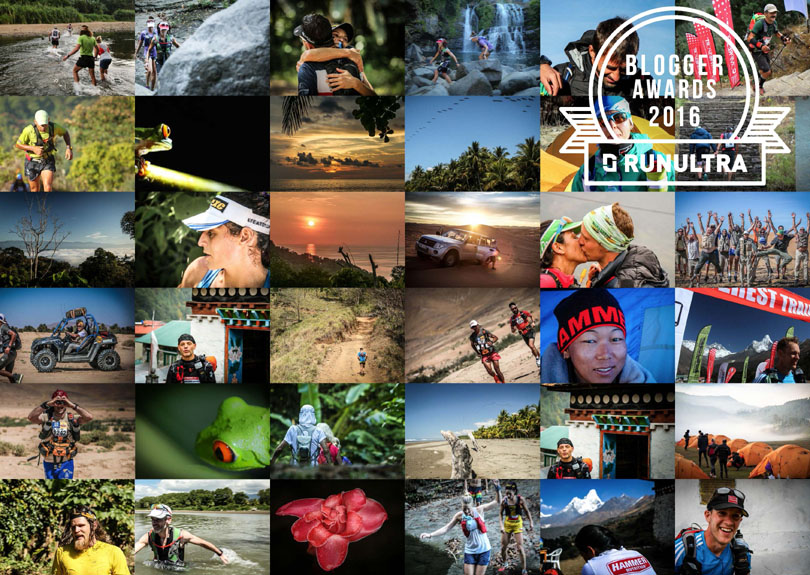Last updated: 30-Aug-18
By Ian Corless
The sky was deep blue. In and amongst the azure a sprinkling of white fluffy clouds made this just one of those perfect Lakeland days. Ambleside bustled as walkers and hikers made their way around the town in search of the ‘next best thing’ or that elusive item of apparel that they almost certainly need.
This idyllic British scene was unfortunately the day before the inaugural Skyrunning UK Lakes Sky Ultra.
What transpired overnight was a complete decline in the weather and as runners assembled at the University of Cumbria for a 0700 start it was very clear that a tough day in the mountains lay ahead!
Skyrunning in the UK is booming. In 2015, the sport has moved up a notch building on excellent foundations laid down in 2014 with races like the V3K, Peak SkyRace, 3×3 80km and the Mourne Skyline MTR. The inclusion of the ground breaking Salomon Glen Coe Skyline and now the addition of the True Mountain Lakes Sky Ultra has stepped things up a notch. These are tough courses that include grade 2 and grade 3 scrambling, ridgeline exposure and courses that demand 100% respect and commitment.
The LSU as it is affectionately known offers a 50km route that starts and finishes in the iconic Lakeland town of Ambleside. Travelling in a clock-wise direction, the route provides one of the ‘spiciest’ races on the Skyrunning UK calendar.
Grinding out over 4500m of vertical gain, the race included a rock chimney down climb, knife-edge arêtes on Striding Edge, scrambling and the demanding Pinnacle Ridge.
From the off, it was clear that finishing this monster would be an achievement. The rain was coming down in torrents along with gusting winds. 2014 Tromso winner, Eirik Haugsnes had flown in from Norway to participate in this race. An old hand at Skyrunning races, Eirik was without doubt the favourite for the win but V3K winner Gareth Hughes had different ideas. Over the early sections of the course the two marked each other as they travelled through Low Pike, High Pike, Dove Crag and then Fairfield. When they reached Nethermost Pike the LSU course came into its own. As the runners made a loop of Red Tarn via Helvellyn it was on the route back from Birkhouse Moor via Striding Edge where the key moves would be made. The rain had been continually pouring and the wind had increased. As Eirik and Gareth entered the traverse via the arête of Striding Edge, the wind came through in gusts making three points of contact essential at times.
It was an impressive sight as shadows appeared through the dense mist, arms outstretched for balance as the 50-mph winds jostled them. The rock underfoot was slick. The dried moss now made wet from the continual rain had the feel of glass.
Behind in the ladies’ race, Sarah Ridgeway, winner of the V3K and 3rd place ladies’ finisher at the Glen Coe Skyline, made her presence felt. She won over The Spine winner and Dragons Back Race 2nd placed lady, Beth Pascall. Both women, experienced in tough mountain challenges, looked in their element as they traversed the challenging arête and down climbed the stone chimney. They then continued on and around the course back to Nethermost Pike and on to St Sunday Crag and the demanding and intimidating Pinnacle Ridge.
The radio crackled, ‘Pinnacle Ridge has been removed from the course!’ It was the correct call. In principal, the bulk of the scramble on the ridge is moderate, however, the ridge does require a grade three manoeuvre. In the winds and with slick rock, it would have been reckless to allow the runners to take on this challenge. Race directors, Charlie Sproson and Andrew Burton had allowed the on-hand safety officer, Joe Faulkner to make that call and make it he did.
Of course it’s easy to feel a little deprived when such a key section of the course is removed but post race nobody complained. Quite the contrary, Lakeland 100 winner Paul Tierney said:
‘If it had been left in I would have done it but I am not sure I would have been too happy about it. It amounts to a couple of minutes in a 7-hour plus race. Let’s be clear, this course was brutal with or without Pinnacle Ridge.’
Descending down to Patterdale, Eirik Haugsnes and Sarah Ridgeway had taken a firm hold of the race but plenty of racing remained and in the harsh conditions anything could happen. It was one of those days when hypothermia was waiting around every corner.
Heading back to Ambleside, runners made the long and arduous journey up towards the road crossing at Kirkstone Pass via the Coast-to-Coast path that included Angletarn Pikes, the Knott, a traverse of Blea Water and then Thornthwaite Crag. Caudale Moor preceded a descent to the road and then the final leg via Red Scree to the warm and welcoming finish at the University of Cumbria.
Eirik Haugsnes and Sarah Ridgeway took respective victories in 7:16:44 and 9:13:04. Gareth Hughes (7:31:22) held off a charging final leg from Dragons Back winner Jim Mann (7:32:38) who in the process took 2 primes for climbing and descending.
Beth Pascall ran a strong 2nd place finishing just over 5-minutes behind Sarah Ridgeway and Zoe Salt rounded out the ladies’ podium after a hard fought battle with the conditions and the course.
It’s rare that first edition races get such praise and acclaim as the LSU has received, especially when conditions are so hard. Eirik Haugsness said:
‘It was brutal, maybe even tougher than Tromso but that is possibly due to such harsh conditions for the race. But the repeated climbing and technical aspects make this a must-do race for those who are brave enough.’
Not a member yet? Join here to enjoy the benefits of RunUltra.
Read about the 2015 Salomon Glen Coe Skyline.




